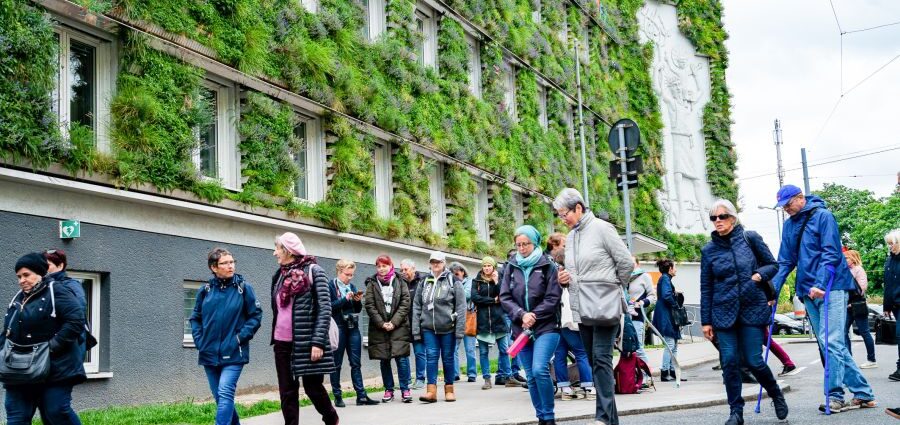When we learned that at the city of Vienna there is a person holding the professional role of “Officer for Pedestrian Matters“, we were very excited to connect with her. Earlier this year we had the opportunity to video chat with Petra Jens and more recently conduct the following interview.
At the heart of our interest in walkability here at Pedestrian Space are issues of safety, access, health quality of life, as well as the very culture of walking in our daily life. So we were truly inspired to begin learning about Wien zu Fuß (Vienna on Foot), a brand of The Mobility Agency Vienna devoted entirely to issues of walking in Vienna.
Thank you Petra for your time and we hope readers enjoy learning about Petra’s work, some of the the history and many activities of Wien zu Fuß.
“The Mobility Agency Vienna was founded in 2013 to promote cycling and walking, with campaigns, awareness-raising, services and innovative projects. As an intermediary between citizens, the administration and politicians, the Agency works to make walking and cycling in the city easier, more comfortable and safer.“
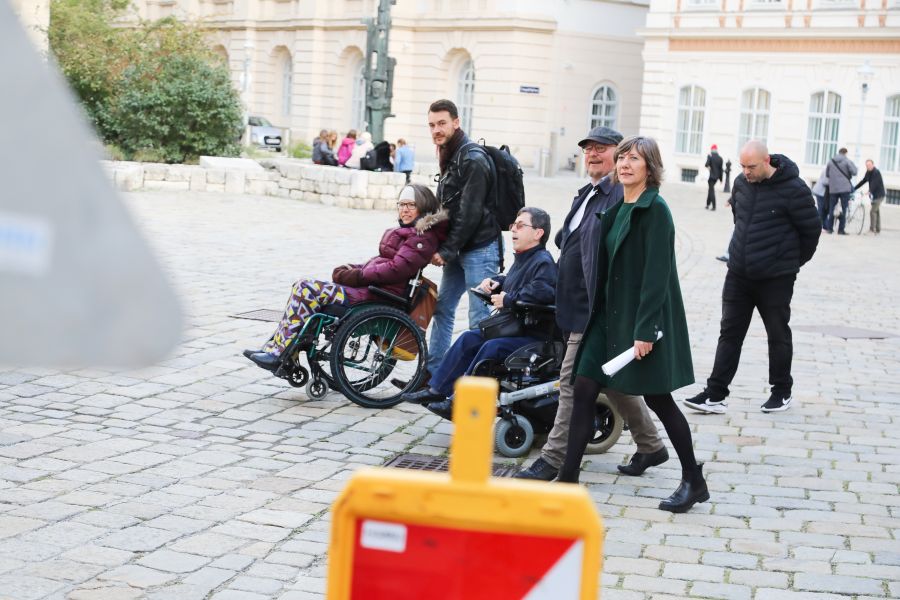
Pedestrian Space: You hold the title of ‘Officer for Pedestrian Matters’ for the City of Vienna (in German: Beauftragte für Fußgänger Innen der Stadt Wien) and deputy head of the Vienna Mobility Agency’. This role of ‘Officer of Pedestrian Matters’ is very exciting and unique. Can you share how you came to hold this role as what your duties are?
Petra: This is a job for a culture change in mobility. My role is a communicator’s one. So I’m not dedicated for planning, nor for traffic organization as to decide where to put a zebra crossing or to decide about width of pavements.
I do advertising for walking in the city, as a healthy and environmental friendly means of transport. For that purpose with my team I create campaigns, services and events. We run several communication channels and for special topics do surveys.
“If you start thinking about walkability, you soon will be confronted with questions of humanity. How do we treat children, how do we treat elderly, women, poor people, and other vulnerable people? Who’s able to move fast and safe through the city, who’s supplied with space and accommodation in the shade, toilets, benches and who’s not?“
Petra Jens

Source: https://www.wienzufuss.at/
Pedestrian Space: What advice or insights do you have for other municipalities who might be interested in developing a similar role such as the “Officer for Pedestrian Matters”.
Petra: Be aware that there’s communication and marketing for every means of transport – except for walking. Try to build a task force for this purpose of active mobility – multiprofessional teams would be perfect. Provide the resources to be able to work properly. Never forget to focus on walking as well as other aspects (cycling, micromobilty, public transport, sharing…) – otherwise, it soon vanish from the agenda.
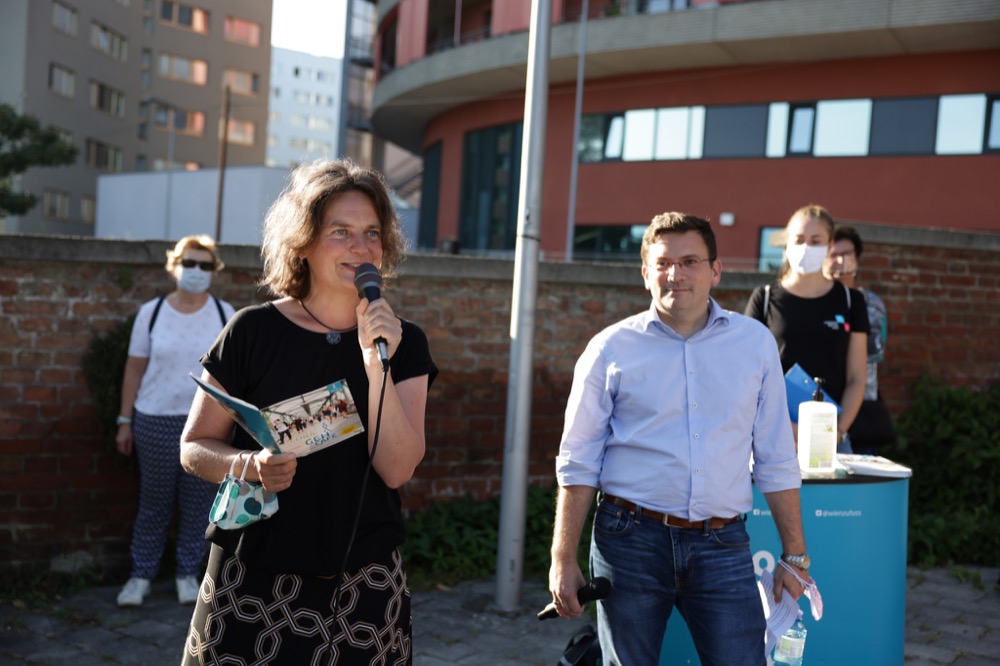
Source: https://www.wienzufuss.at/
Pedestrian Space: Important to note is that you are not a planner, your role is as a communicator and “promoting walking in the city”. Can you share more about this and what this means in terms of your connectivity to both the city and the public?
Petra: I’m in between different spaces. That allows me to talk with municipality representatives, political representatives and citizens. To work in the mobility agency as an intermediate organization means a certain way of freedom. It’s part of my responsibility to decide which projects to invest in for an impact in public awareness.
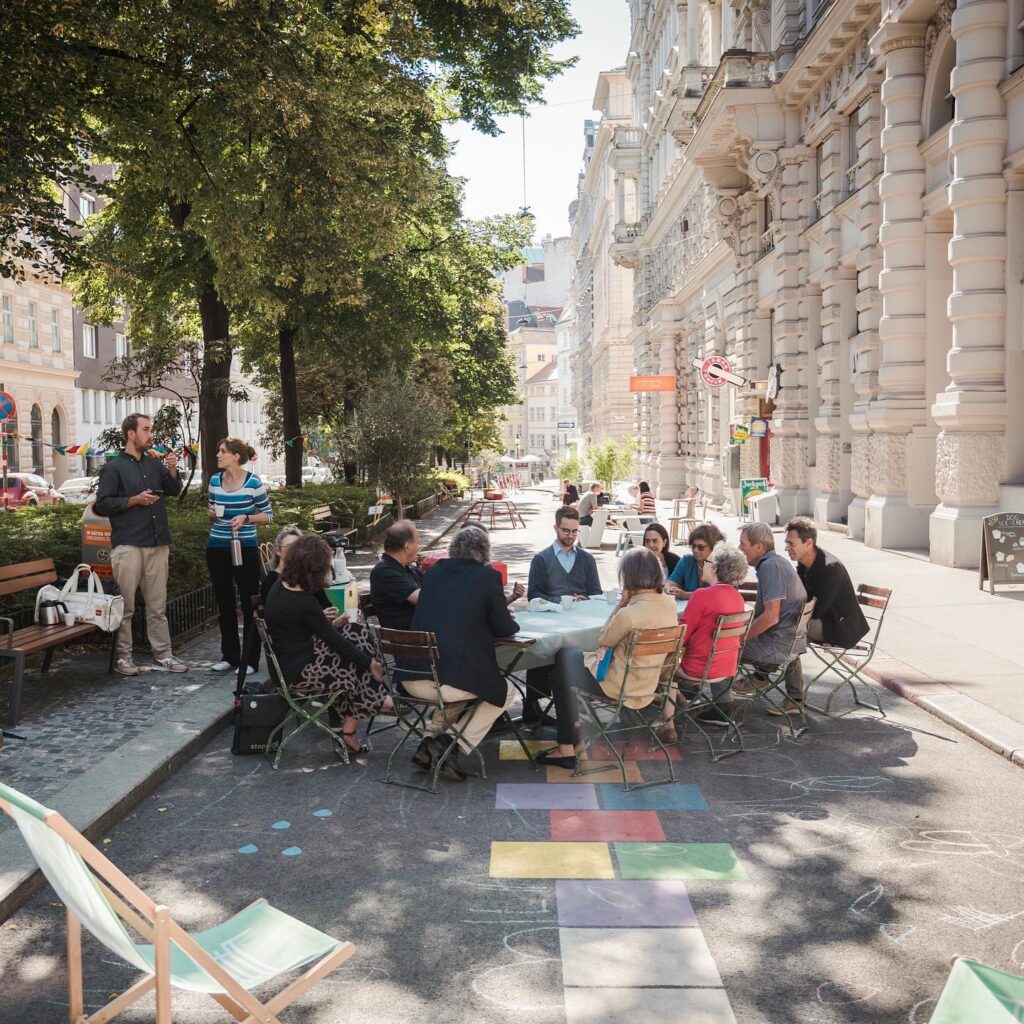
Pedestrian Space: When we first spoke earlier this year, it was really fascinating to hear how people initiatilly responded to your role (for example being surprised that there was a paid individual to promote walking) to then realizing that the issue was in fact very important and critical for climate and health. Can you share more about the progression of public reception to your role and to Wien zu Fuss?
Petra: One example- We created the first Vienna’s Walking Map which included green and interesting walks through the city, points of interests such as markets and shopping streets but also public toilets and water fountains.
The media reception was a disaster. I was accused of wasting public money even before the first map was presented.
But from the first day on, many people ordered these maps. After two weeks we had to reprint it. The next year, it was exactly the same story. Since then, there has been no negative press about service products for walking.
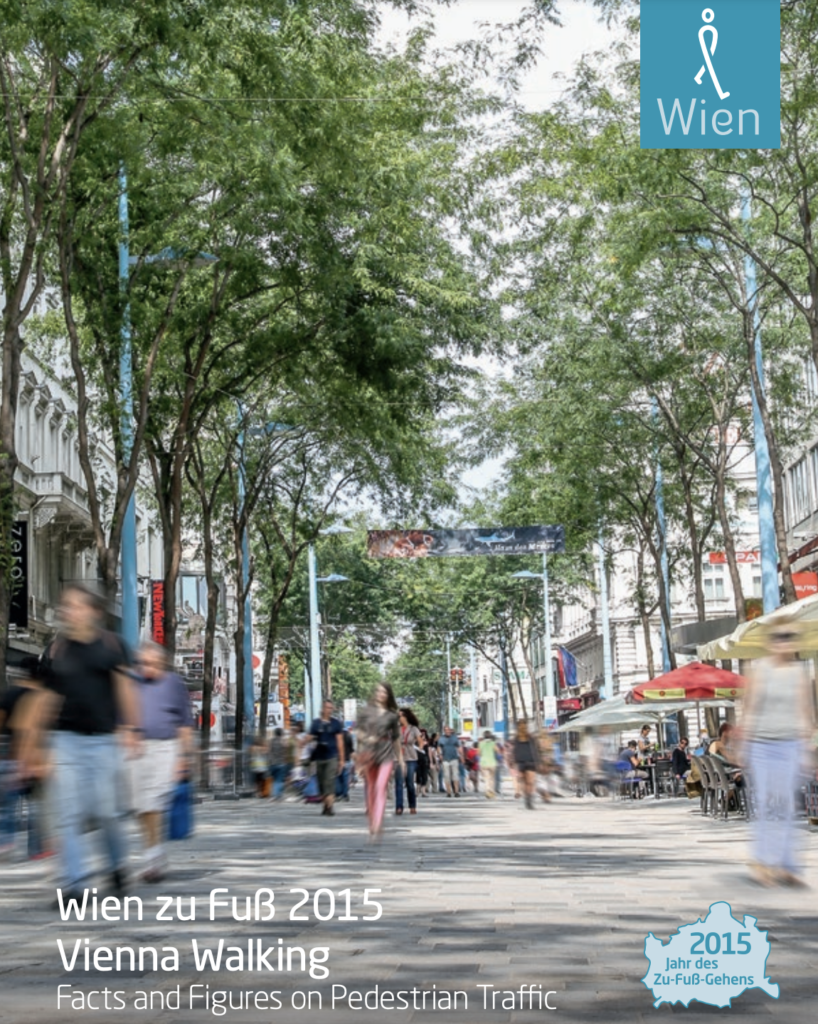
Pedestrian Space: You noted that it was during your third year in the role that you began to see a real shift – that initiatilly it was difficult to learn how to talk about walking and figure out how to communicate about this form of mobility. What happened in the third year that led to change?
Petra: In 2015 we ran a campaign called the “Year of walking“. It was the city’s first campaign for something as simple as walking. We learned to turn something that’s taken for granted into something very special and desirable.
For a municipality, everyone who’s walking through the city should be celebrated. Because there are no means of transport using less public space, less carbon dioxide, while causing more vibrant atmosphere and health benefits.
Walking is the way we first moved, it’s literally the most human way of transport.
If you start thinking about walkability, you soon will be confronted with questions of humanity. How do we treat children, how do we treat elderly, women, poor people, and other vulnerable people? Who’s able to move fast and safe through the city, who’s supplied with space and accommodation in the shade, toilets, benches and who’s not?
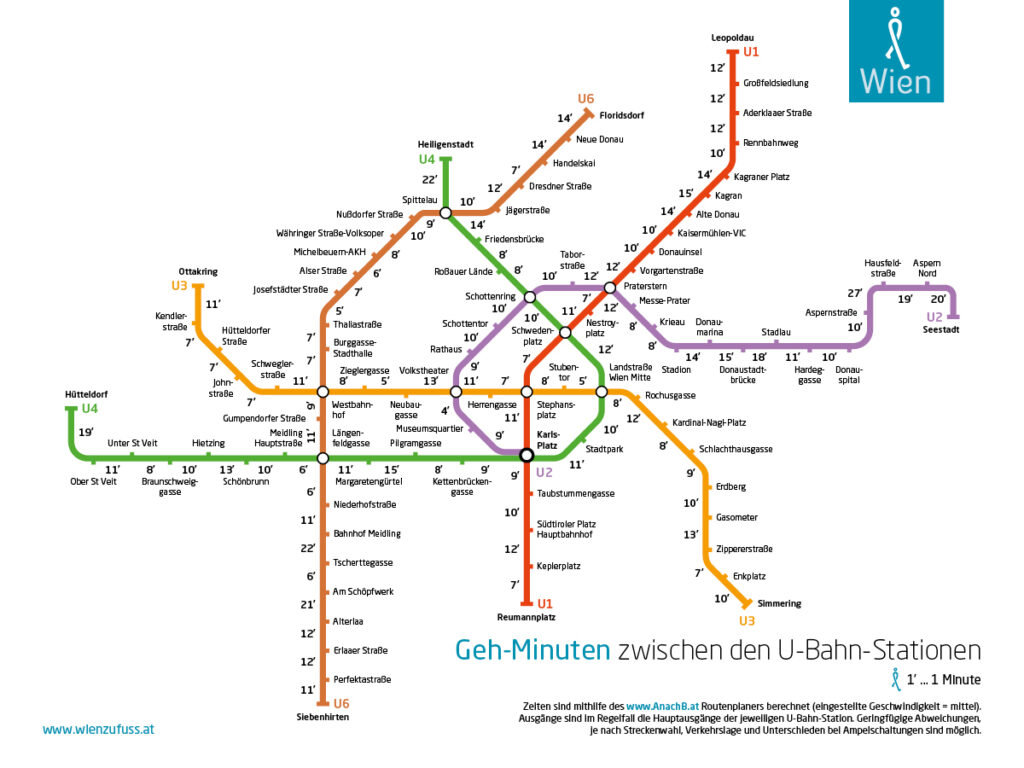
Source: https://www.wienzufuss.at/
.
Pedestrian Space: Part of the work of Wien zu Fuss is also visual communication and creating positive pictures of walking. Can you share more about your team’s work in terms of creating imagery of walking?
Petra: Walking has no object except the human being itself. If you take a picture of a person with a bike and use it for advertising, it’s obvious that you want to talk about cycling. The same is with cars, scooters, tramways.
If you take a picture of a person that walks – the message is not that clear at all. And that’s the greatest challenge in marketing for walking.
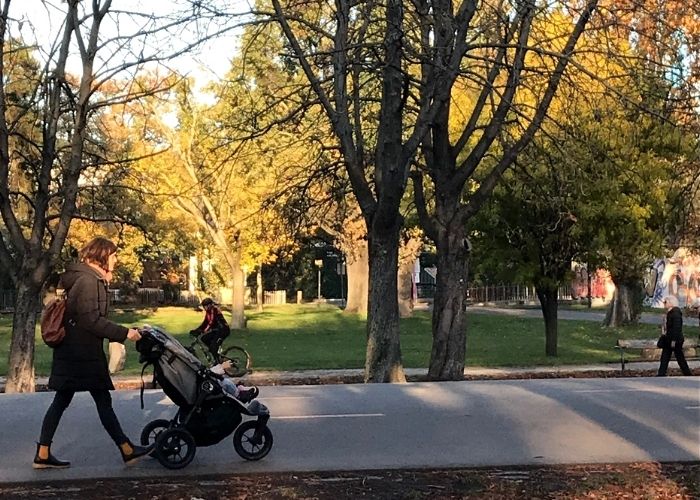
“If you talk about walking and communicate about walking, you have to focus on the human being. That’s why the logo of Wien zu Fuss is a whole person.”
Petra Jens
Pedestrian Space: We would love to hear more about the Walking Cafés, how they came about and what their purpose is.
Petra: We started the walking-cafés (Geh-Café) in 2013. First, 15-25 people joined our short walks through different areas of Vienna. At the end of every walking-café we offered a pop-up café in public space, just where the walk ended.
My idea was to bring citizens together with local experts to discuss improvements for a better walkability. I was disappointed because people were just interested in a free guided city tour, a cup of coffee and a cake.
Later I learned that the pictures of our walks where worth it. We soon became the leading agency providing pictures about walking in many areas of Vienna. Some of them are exhibited in the Technisches Museum Wien (Technical Museum of Vienna). After some years, district leaders became aware of the Geh-Cafés and joined to get in contact with citizens.
So finally – the result was not exactly what I expected, but it became a popular instrument of walking communication.
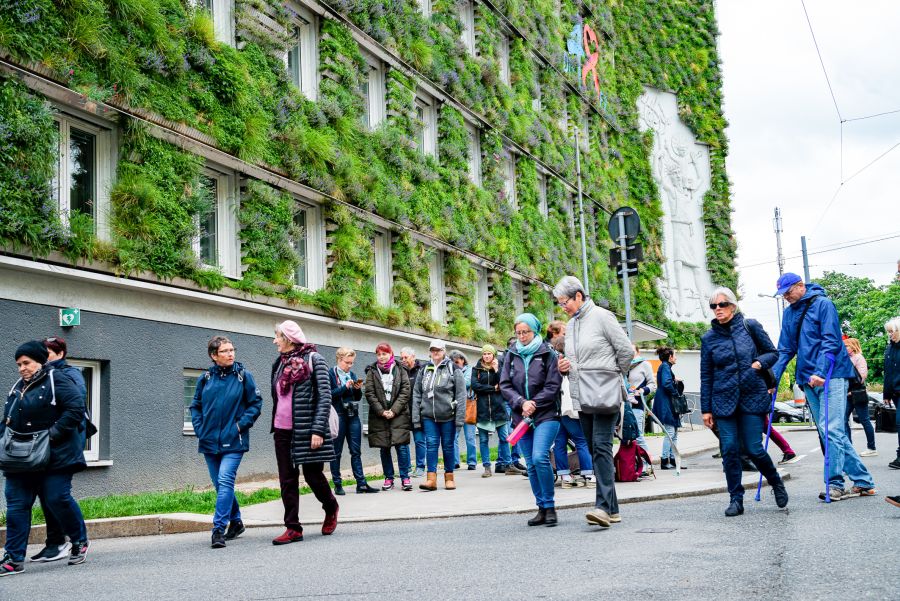
Source: https://www.wienzufuss.at/
Pedestrian Space: It is really interesting that every Walking Cafe is a cooperation- a partnering body or organization provides the guide – guides are not paid but are communicative by nature and like to do what they do. I think this is a really inspiring model for other cities to look at. The pandemic put a halt to these but you will start again correct? What are some examples of upcoming walks?
Petra: We will start soon, in August with a project called “Placemaking in Floridsdorf”. You can view coverage of former Walking-cafés here: https://www.wienzufuss.at/geh-cafe/
In September we walk with a local community organization through Hernals and in October we visit on of the largest social housing area in Favoriten.
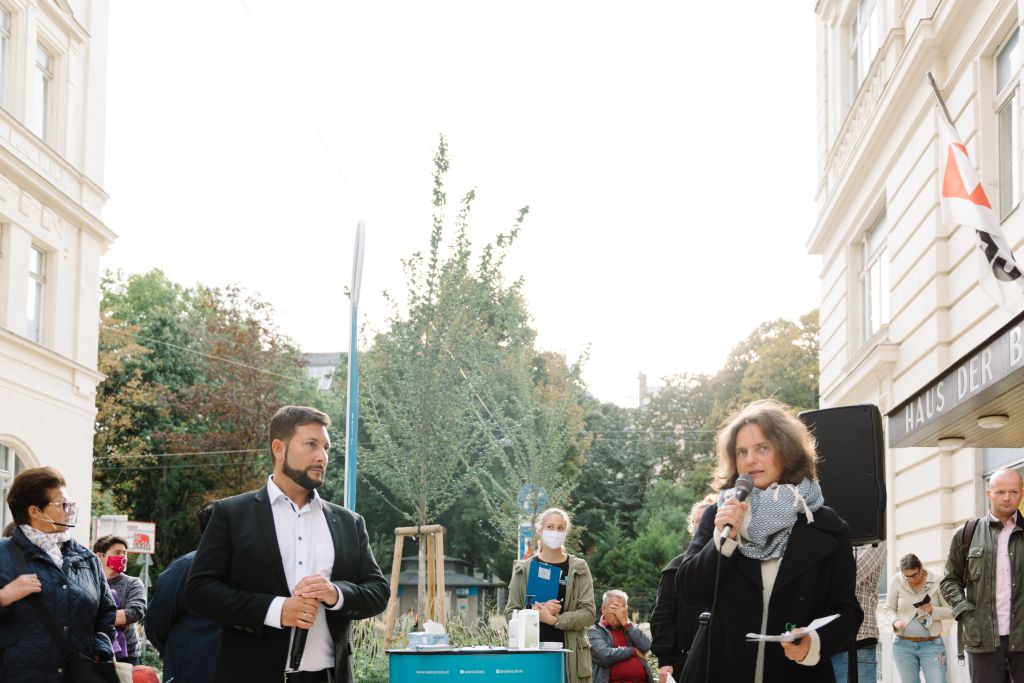
Source: https://www.wienzufuss.at/
Pedestrian Space: During our talk you also referred to the early 90’s, when some female urbanists started a gender policy in the field of urban planning and focused on gender quality in public space. As you note, they knew that women do more walking then men, however we see that walking infrastructure is often less prioritized. Can you share more on this as well as any best practices or lessons Vienna has to offer in this area?
Petra: Before a place is rebuilt, Vienna’s municipality does research about users and the social functions of this space. The aim during the planning process is to improve the infrastructure mainly for disadvantaged people.

Source: https://www.wienzufuss.at/
Pedestrian Space: Can you share more about the mobility education you provide to elementary schools?
Petra: We started a program for kindergarten classes called the Kindergarten Mobilitätsbox.
Later we started a program for elementary schools named “Die Stadt & Du”.
There are plans to continue with programs for students in secondary school.
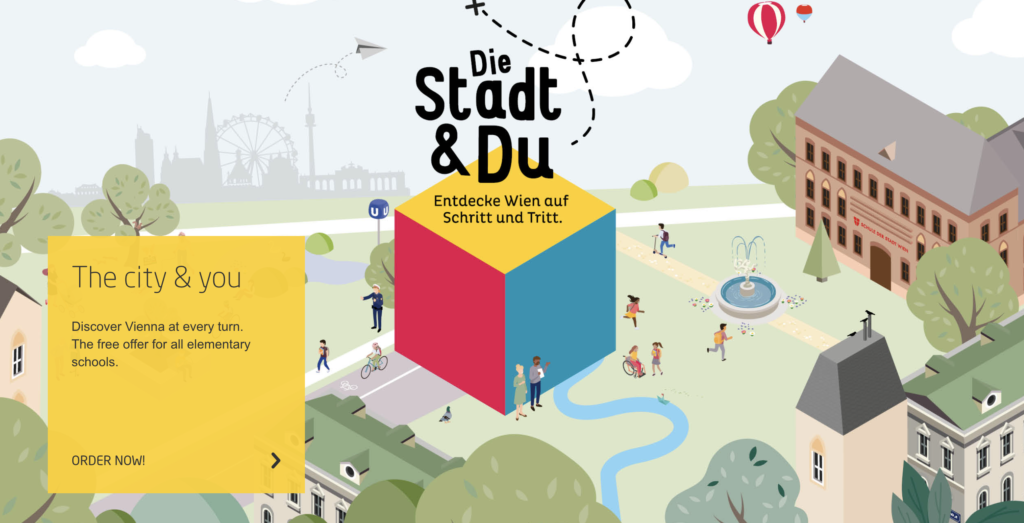
https://www.diestadtunddu.at/
Pedestrian Space: You note that your organization’s efforts helped to decrease the number of children driven to school from 19 to 13%. How did you do this?
Petra: I think this is a result of various efforts. Next to mobility education programs it might be good and affordable public transport as well as school streets and car-free spaces in front of schools.
Pedestrian Space: How has the pandemic affected your work?
Petra: Walking suddenly became outdoor activity number one. City guides were sold out in bookstores. It’s remarkable that newspapers now write more often about walking and give tips for city tours.
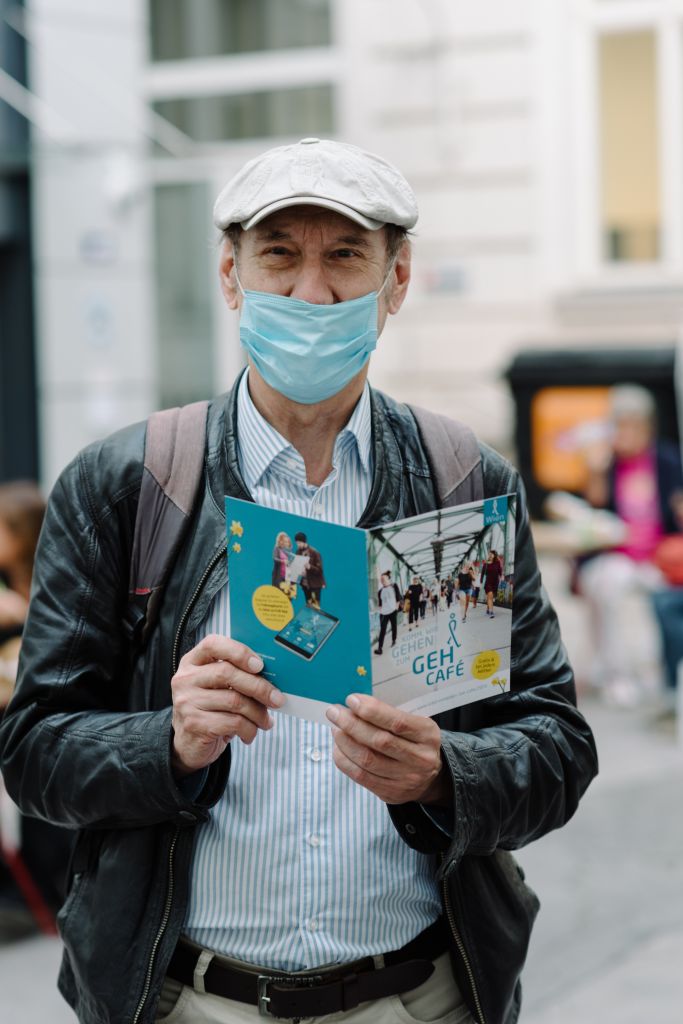
Source: https://www.wienzufuss.at/
Pedestrian Space: Can you share more about how Austria recently brought walking to. a federal level, moving it beyond the municipal level where it is usually handled.
Petra: Theres a national Walking Masterplan, published in 2015. But it wasn’t until 2021 that a funding program for walking infrastructure was started, so that’s new.
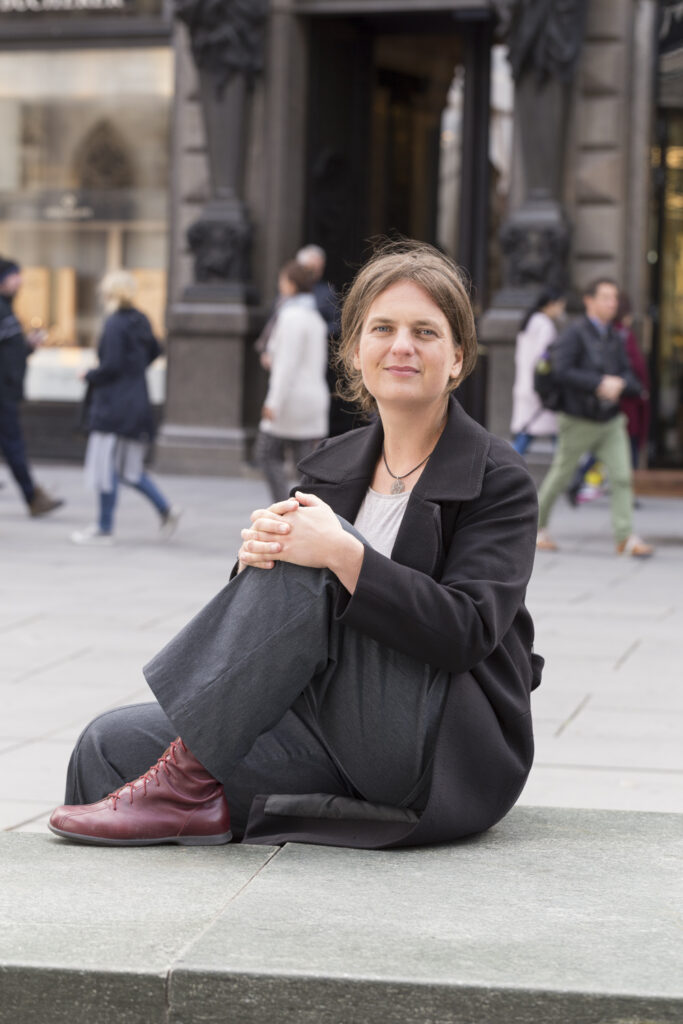
BIO FOR PETRA JENS
Petra Jens lives and works in Vienna. She is the city’s representative for pedestrian matters and assistant manager of Mobility Agency Vienna, a company owned by the City of Vienna.
Petra Jens graduated from Boku – University of Natural Resources and Life Sciences and has a degree in Political Education from Donau-University Krems. In the year 2006, as a young mother of three children, she started an internationally acclaimed and successful citizens’ initiative fighting the mess left by dog feces in public spaces. Her petition demanding stricter rules for dog owners and more care for public space was signed by 160.000 people and led to cleaner streets and better walking conditions in Vienna.
She became a representative for walking matters of the city of Vienna in 2013. In this function, she
- Created and led the campaign the “Year of Walking”, which placed emphasis on walking in the City of Vienna’s communication strategy for the first time (Vienna was the first city worldwide to conduct a walking campaign of this scope)
- Publication of a “walking report”, a survey and monitoring on walking/pedestrian traffic
- Establishment of a guidance system for pedestrians in the city and marking public passages
- A number of pilot projects, e. g. implementing mobility management for children and families in Vienna, creating and providing mobility boxes used for teaching in kindergarten; establishing “Streetlife Festival”, Vienna`s biggest public event on mobility and public space.
Photo Credit: Regina Huegli
Visit Wien zu Fuß online at https://www.wienzufuss.at/

